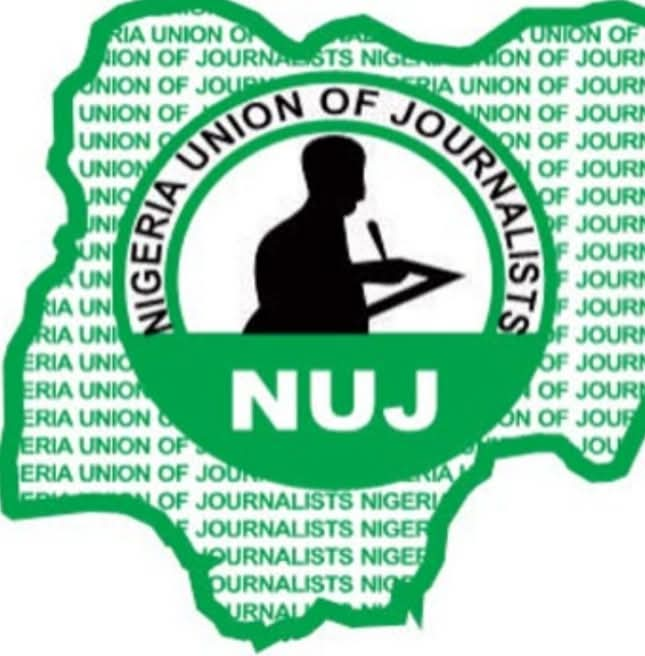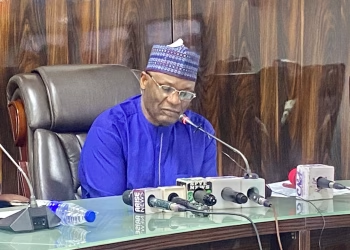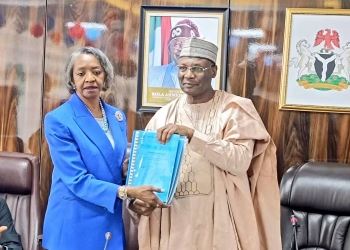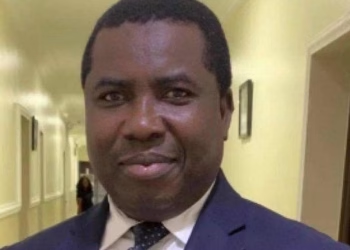By Bayo Onanuga
A Paper delivered by Bayo Onanuga at the 5th Timeline Awareness Initiative Lecture held at the Radisson Blu Hotel Ikeja on May 29th 2024
Protocol
The theme of this paper brings to the forefront the growing concerns over the abuse of media in its contemporary, diffused form.
The media space is now like a labyrinth, with billions of players operating on a multitude of social media platforms, spreading misinformation, disinformation, fake news, and sensational news. The truth is the first casualty, as the news purveyor is quick to share or spread any information without checking its authenticity.
Our world, not just our country today, is endangered by the spread of fake news, which grossly distorts reality and is often sensationalised.
In a paper I delivered last July at the Open University in Abuja, I referenced various fake reports that were offered to our people as genuine news. I also underscored the age we now live in. We are not just in a digital age; we live in an age some writers have described as an information disorder.
The digital age provides the fuel for the infodemic, as the World Health Organisation called it during the last COVID-19 pandemic.
Nowadays, news easily goes viral, faster than the bush fire, making gatekeeping more daunting. Anyone with a smart phone and an X, Facebook, or WhatsApp account can become a news publisher. He can originate and spread fake news and misinformation. He can also simply “forward” any so-called news that he comes across and finds shareable’ or ‘fanciful’. If many people join in by pressing the share button, the news, nay, fake news, soon becomes viral and the assumed truth. Experience shows that it takes a longer time to make a correction and establish the real truth. On the Internet, facts often don’t matter. Facts are murdered as netizens clout chase for ‘likes’ and’retweets’.
Many of us will remember the many fake stories that preceded the unveiling of President Tinubu’s cabinet last July. Several versions of the list were published, with each proclaiming its authenticity. But they all lied for the sake of traffic gain or click bait.
Also last year, Nigeria’s Secret Police and the Department of State Services tried furiously to debunk three fake stories peddled against it online within a few days.
One of the lies was that it arrested Senator Abdulaziz Yari, a former governor of Zamfara State and failed contender for the senate presidency, because he refused to pick up a telephone call from President Tinubu.
This was not true, the agency said. “It is petty, if not laughable, to report that Yari was invited for refusing to pick up the president’s call. This is the height of junk journalism. Yari knows why he was invited,” the DSS said in a statement.
The second lie was that the agency raided the offices of the Independent Corrupt Practices and Other Related Offences Commission (ICPC) and Code of Conduct Bureau (CCB) and carted away damning files on President Tinubu. Both the DSS and the agencies mentioned denied the story that had been widely circulated by the fake news merchants.
Third, the DSS also denied the false claim that it was snooping on judges on the Presidential Election Petition Tribunal.
“The service denies all the allegations as they lack any factual basis or credibility. They are only figments of the creators’ imaginations. More so, the publishers in question have been noted in and outside the country for their notoriety for peddling fake news, sensational journalism, and gutter journalism. Without a modicum of proper and civilised behaviour, they indulge in character assassinations and sundry blackmail as business,” the DSS said.
As a journalist for over 40 years, these reports were simply horrendous as they challenged our journalistic beliefs and practices. Many of the stories that we come across simply fail the acid test of journalism. But it is expected, as quacks have invaded the profession. No thanks to Big Tech: Google, Meta, and others.
The Big Tech obliterated the boundaries of communication channels and threw the floodgate open to all comers, especially with the emergence of social platforms such as WhatsApp, TikTok, X, and Facebook. Everyone with access to social media and a smart phone is now a journalist.
This disrupted the model of the old media, also called legacy media, with the attendant reclassification of what is news and what is not, with rules of reporting obeyed mostly in the breach.
To the real journalist, well trained in the art and ethos of reporting, news reporting is about curating information and diligently processing it for the truth before transmitting it to a community of users through channels of mass communication. To ensure this, several safeguards and guardrails moderate the practice of journalism, just to be sure that the act of news reporting does not depart from the primary requirement of communicating the truth.
Included in these safeguards is the observance of media ethics by individual practitioners. Sanda (2017) appropriately put this in perspective by noting that the issue of media ethics in journalism is a moral philosophy and very paramount. Truth, accuracy, objectivity, fairness, honesty, independence, balance, relevance, and a watchdog role are among the most important values that define journalism.
By its nature and function, mass media ethics is regarded as a moderator of human actions and protects the less privileged against the vagaries of the mass media. Also connected to the somewhat regulatory underpinning of news reporting is editorial gatekeeping.
The theory of gatekeeping was first instituted by social psychologist Kurt Lewin way back in 1943. He enunciated that gatekeeping occurs at all levels of the media structure, from a reporter deciding which sources are presented in a headline story to editors choosing which stories are printed or covered, but not limited to media outlets and advertisers.
In the same vein, Pamela Shoemaker and Tim Vos describe gatekeeping as the “process of culling and crafting countless bits of information into a limited number of messages that reach people every day, and it is the centre of the media’s role in modern public life. This process determines not only which information is selected but also what the content and nature of the messages, such as news, will be (Wikipedia, 2023).
I have gone to this extent to elaborate on the nature and potency, for good or bad, of news reporting and, of course, its centrality to all affairs and predispositions pertaining to the untainted communication of news to a mass audience.
The question arising from the outline of the array of safeguards in respect of news reporting relates to the possible consequences of news reporting that is subjected to manipulation and falsehood and conveyed to the audience in the toga of news.
Distinguished ladies and gentlemen, this is nothing but sensationalism masquerading as news. This phenomenon has been the major source of worry for all people of goodwill and good conscience, not only in Nigeria but in countries across the world.
In journalism and mass media, sensationalism is a type of editorial tactic. Events and topics in news stories are selected and worded to excite the greatest number of readers and viewers. In modern parlance, it is called ‘click baiting’.
In January this year, I appealed to media platforms to temper their sensational headlines, which often distort the truth and paint the country in a bad light, especially when we report terrorism and kidnapping.
That January, one headline screamed “Over 17,000 Nigerians abducted under Buhari and Tinubu” and went ahead to describe the incidents as an epidemic.
Another newspaper wrote, ”2,423 people were killed and 1,872 kidnapped in eight months of Tinubu.” There was yet another scary headline that will truly scare any outsider away from my state of Ogun. It says, “From rising industrial hub to den of cultists and criminals.” The impressionistic outsider will, at first blush, think every inch of Ogun is under the siege of cultists and criminals.
Of course, this sweeping generalisation conveyed by the newspaper does not match the reality lived by the people in the state.
As a newspaperman myself for over 40 years, I understand the game the media plays. To sell our newspapers or clickbait, we tend to exaggerate and embellish, sometimes forgetting the social responsibility of the media, not to give the impression that our country is under siege by criminals or that every nook and cranny of our country is under their stranglehold.
This style of news reporting encourages biassed or emotionally loaded impressions of events rather than neutrality and may cause manipulation of the truth of a story. In this way, sensationalism may rely on reports about generally insignificant matters and portray them as a major influence on society, or bias presentations of newsworthy topics in a trivial or tabloid manner, contrary to general assumptions of professional journalistic standards (Mitchell, 2007; John, 1999). Additional definitions of sensationalism highlight its attention-grabbing elements and journalistic form (Grabe et al., 2001) and the dramatisation of ordinary people and information (Wang and Cohen, 2009). Sensationalism, whether in content or form, is overwhelmingly considered undesirable. It has been categorised as improper and unfit news (Slattery and Hakanen, 1994), described as odd, unusual, and stupid (Bernstein, 1992), and accused of evoking’morbid’ curiosity (Haskins, 1984). Sensationalism ultimately blurs the lines between traditional journalism and tabloid journalism (Grabe et al., 2001).
As Frye (2005) puts it, media sensationalism has been studied for at least a century. Today’s journalism is fraught with sensationalism. Truths are expanded to seem more exciting and dramatic. Stories are aimed at gaining higher ratings and more money in certain media. In this regard, the situation report shows that we have seen how the traditional media have continued to regulate and constrain the possible sensationalization of news, as highlighted earlier through the moral suasion of compliance with media ethics and the regulation of news reporting through gatekeeping. The same cannot be said to be obtained in the realm of new media.
Before proceeding, I believe an understanding of the concept of new media and its alter ego, social media, will be appropriate for contextualising the purpose of the theme of this paper. New media formats include mobile apps, video, blogs, ebooks, email, podcasts, smart device apps, video games, and interactive content. As Penn (2021) explains, new media relies on digital methods of distribution, such as the internet, for reach; as such, new media is far more accessible for the average individual. In the new media landscape, an individual can have as much reach, engagement, and distribution as a Fortune 10 company. New media have been used interchangeably with social media. Though they share many similarities, there are some differences between them. Social media relies on one key principle that new media doesn’t necessarily rely on: the network effect. A new media property like a blog has inherent value, whether that blog has one reader or a million readers. On the other hand, a social network like X would be worthless with only one user. Only as the number of users and contributors rises will social networks become more valuable. Robert Metcalfe, the inventor of Ethernet, coined this term for the network effect, in which the value of the network as a whole increases with every new node on that network. This is the key difference between new media and social media: social media requires the network effect, while new media does not, in order to create value.
For the purpose of this paper, I will be referencing social media to include new media. By way of a more attribute-specific definition, it has been said that social media is a form of communication that uses technology to connect people. It includes websites like Facebook, Twitter, X.com, Whatsapp, and Instagram. It is this attribution of network effect that has turned social media into an increasingly disjointed communication behemoth, with bits of it being controlled by individuals articulating and advancing diverse biases in their respective unregulated spaces.
Compared to traditional newspapers, content shared on social media usually does not pass an editorial check (Verma et al., 2017), making it more susceptible to fake content and information (Vosoughi, 2018). Spreading rumours and false stories is a typical human activity that has existed since the beginning of mankind (Domenico et al., 2021), but social media has amplified this phenomenon by spreading fake information faster and more widely (Vista, 2015; Liu et al., 2016). Most of the time, every piece of information posted on social media reaches millions of users in real time, which, in the case of misinformation, can be a problem for companies, organisations, individuals, and governments. Fake news shared on social media can damage the reputation of companies, individuals, and governments (Berthon, 2018); it can represent a financial threat for companies or political campaigns (Allcot, 2019); or, in some cases, it can even lead to boycotts (Obada, 2019). The rapidity of spreading information through sharing and posting often leaves no time for reaction from the person or organisation included in the news (Vafeiadis et al., 2019). Sensational news is another way of spreading easily fake, exaggerated, or distorted information (Molina et al., 2021). By wanting to create a sensation, some isolated facts about the government’s administration can be made a headline, threatening the image and trust of the people.
Talking about the dangers of social media sensationalism, Nasra Abdiasis (2022) has this to say:
“Online content has become dominated by sensational form, from short, fun listicles to personalised headlines. Modern audiences interact with news organisations via social media through liking, sharing, and commenting on online news articles. And though this means that important information is now more easily accessible to people from all walks of life, it also proposes a dangerous new world in which the line between news and entertainment is permanently blurred. The sensationalist news trend has grown to be a cornerstone of modern internet culture, from clickbait thumbnails on YouTube to snappy, ill-researched TikToks.
This means that the sudden emergence of social media hasn’t only been viable for building necessary bridges across our borders. But it has also boosted the already quick flow of the information superhighway to an almost terrifying degree. Now, public cases and traumatic incidents that require much sensitivity, expertness, and caution are all accessible to anybody with a phone, all at the click of a button. LeFevre (2019) further notes that social media has its fair share of sensationalist news; there are even websites that provide ideas for users to create sensational posts.
Users are being forced into a sensationalised ‘publishing media’ environment, thus accustoming social media users to attempting to post that sensationalised content themselves. This attention-seeking behaviour has left people vulnerable to dangerous propaganda and influence campaigns.
To this end, I recall the running battle between the federal government during the administration of ex-President Muhammad Buhari and Twitter between 2019 and 2023. Before the eventual ban of Twitter in June 2021, the then Information and Culture Minister, Lai Mohammed, led a delegation of government functionaries on visits to media organisations, where he expressed worry that social media was fueling divisive sentiments in Nigeria.
It was on these platforms that a false story gained currency: that President Buhari had been cloned and that the man running Nigeria was a Jubril from Sudan. Many people believed the trash.
The Nigerian government is not alone, however, in expressing the negative implications of Twitter usage. In 2008, the United States Army reported that social media could be used as a vehicle for malware to damage computers or other mobile gadgets, such as smart phones and tablets. Social media platforms such as Twitter and Facebook can be used as tools by terrorist groups to expand their networks. These platforms can be used not only to spread propaganda but also to host embedded malicious software links and applications that can corrupt an unsuspecting user’s.
It is this sort of concern that Nigeria’s own National Security Adviser (NSA), Nuhu Ribadu, expressed a couple of weeks ago when he declared that the negative use of social media constitutes both local and global threats and, as such, presented an immediate national security priority. In making this submission, he listed the preponderance of fake news, misinformation, and disinformation as threats to national security and public engagement. He said his agency had assessed the adept use of social media platforms by those who seek power to shape public opinion against citizens. This threat, according to him, is both global and local and presents an immediate national security priority.
In conclusion, while it has been empirically established that the unconscionable use of social media has been a source of threat to the security status of the country, my submission is that social media platforms are merely amenable to the type of usage to which they are employed.
So, the immediate antidote to the growing malignancy in our national security standing has to be a turn to patriotism by the average Nigerian in the knowledge that while there is a need for some form of regulation of social media platforms, we should always acknowledge the fact that only misguided citizens who make negative use of X to achieve their selfish destructive agenda constitute the major threat to our country’s national security.










